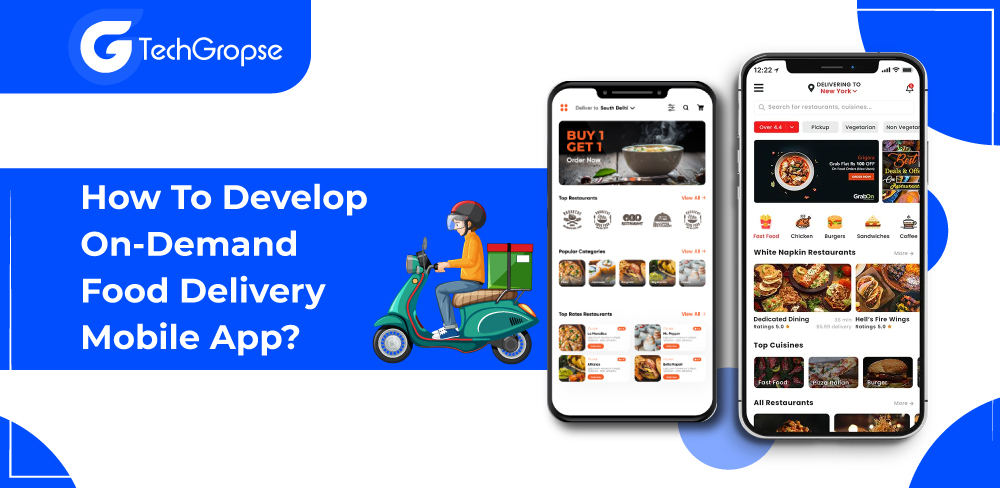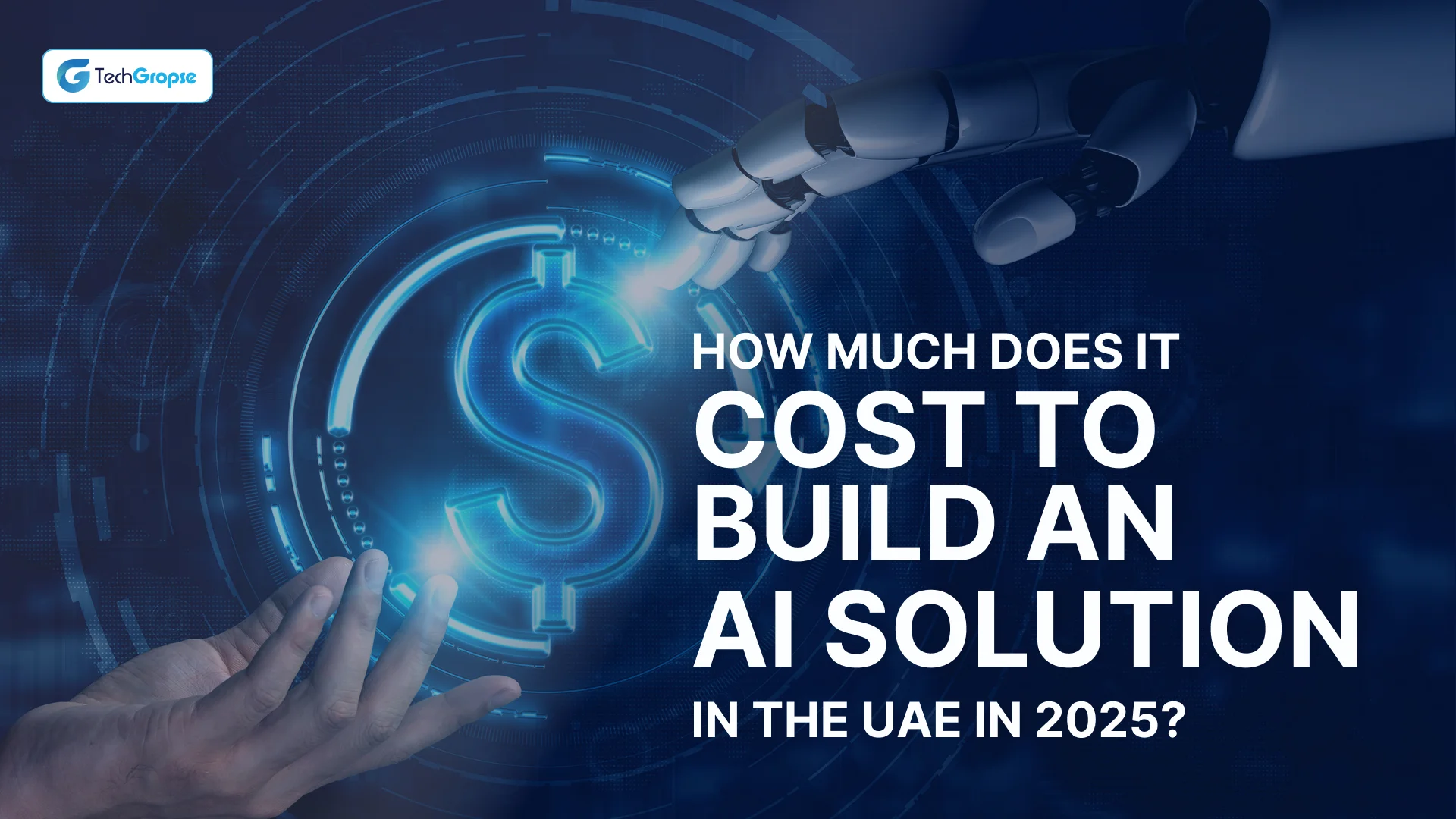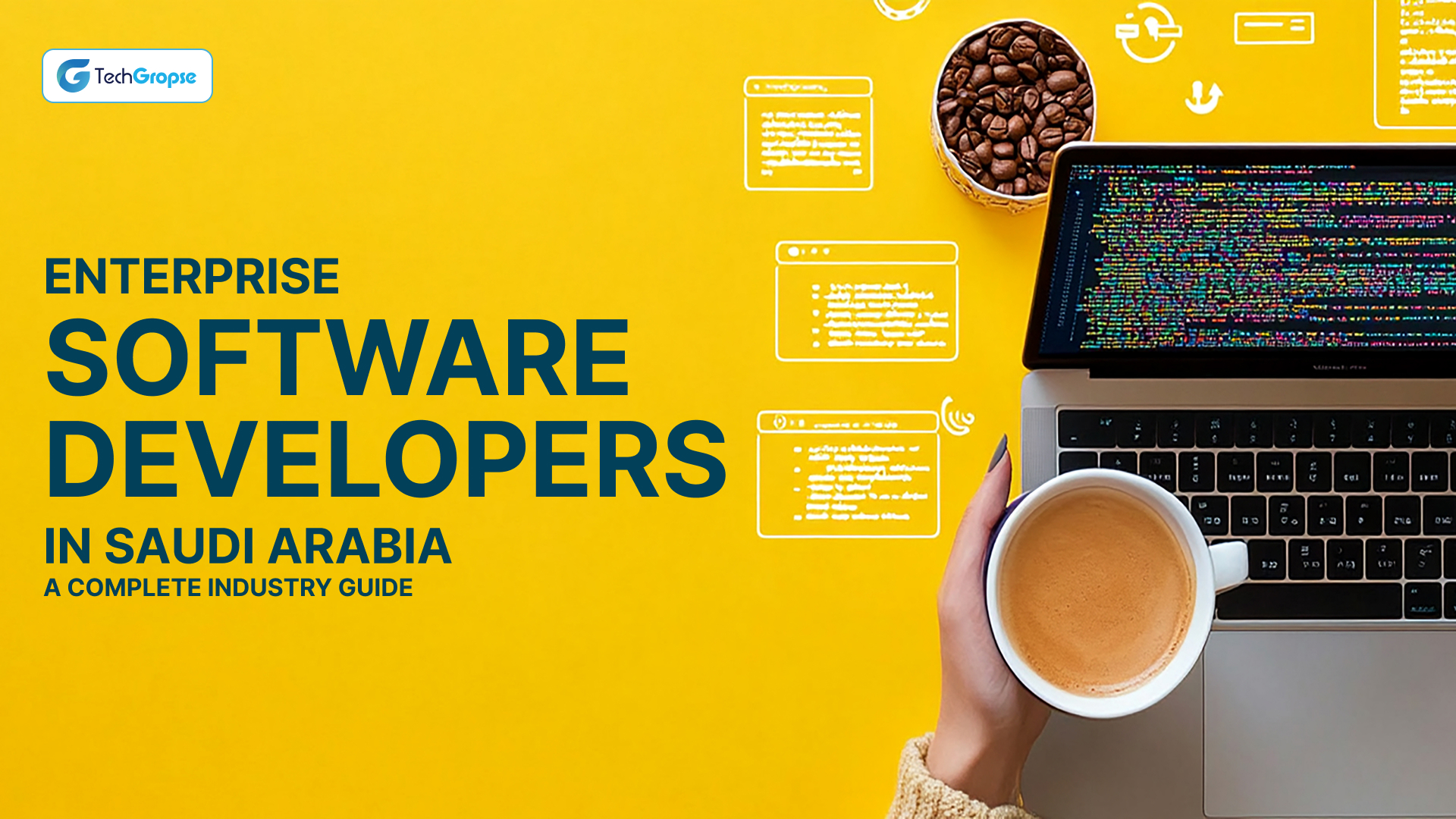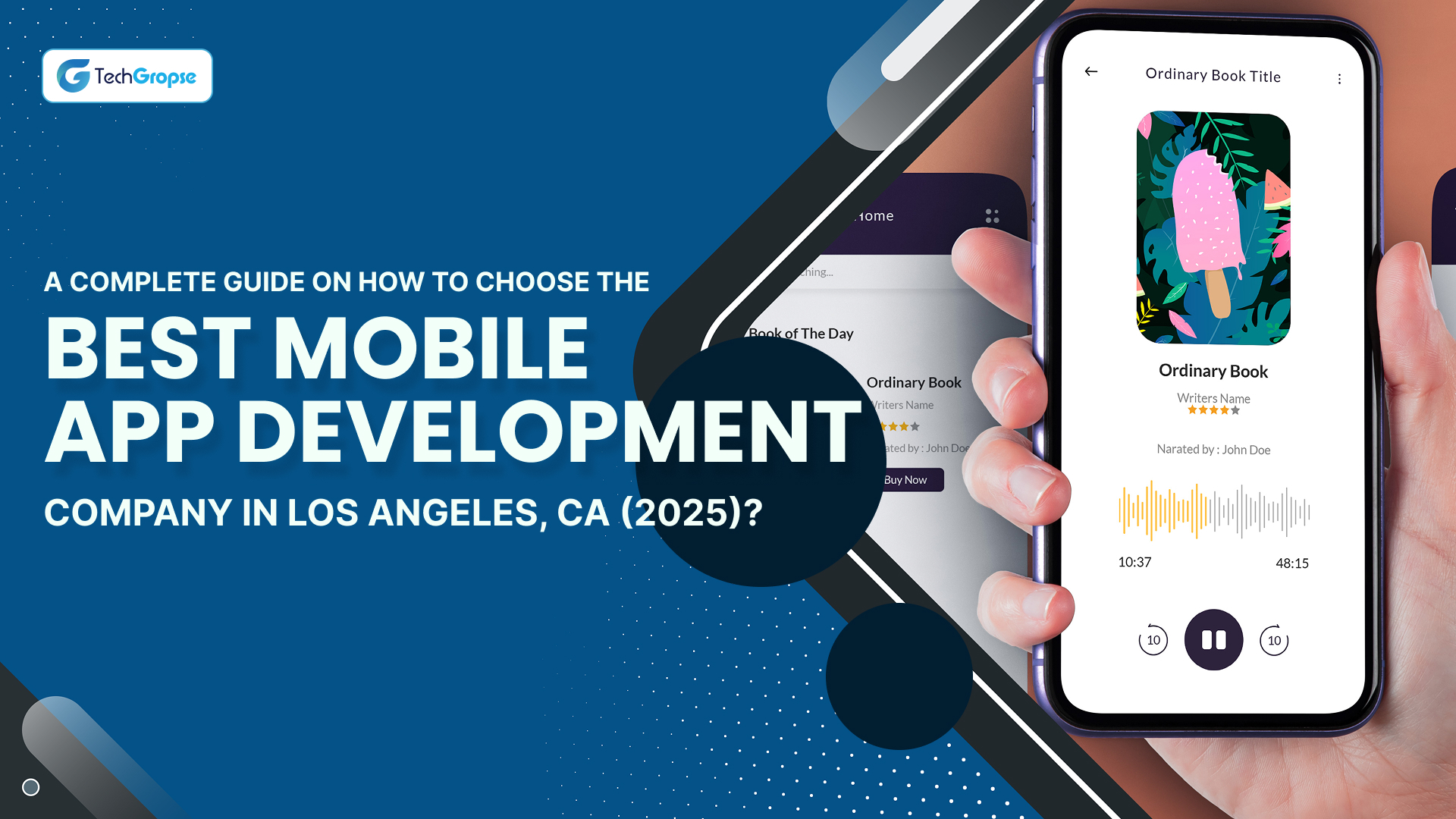On-demand food delivery app development is growing. Many on-demand delivery apps like FoodPanda, Uber and Instacart are booming. Therefore, it is profitable to invest in on-demand food delivery app development. A report shows that the revenue of food delivery apps is $70,741 million, which is expected to increase by 8.2%.
It means it is profitable to develop on-demand food delivery mobile app for your business. Through the help of such an application, users are able to access their favourite food 24/7.
Are you interested in building your own app, it is good to move to the next strategy that is essential to shape your idea into reality. Hence, it is tough to build a functional application as app development requires proper planning, strategy and many more things. In today’s broadcast, we will discuss the complete guide to develop on-demand food delivery mobile app.
Market Trends & Opportunities of On-Demand Food Delivery App Development
As the demand for on-demand food delivery apps grows, the market opportunities always expand providing more competitive prices combined with personal convenience. You know that about 55% of people ordering food or takeout tend to avoid person-to-person interaction switching to digital services.
According to a research, there will be 2.14 billion online meal orders by 2021, up from 1.66 billion in 2016. The total revenue in on-demand food delivery app business has already cost $122.739 million in 2020 and is going to reach over $164.003 million by 2025.
Many companies like Postmates, UberEats are more popular in today’s market that are growing fast. If you want to grow your business in such a way, you have to consult with a food delivery app development company to get the best solutions for your organization.
Business Models for On-Demand Food Delivery App
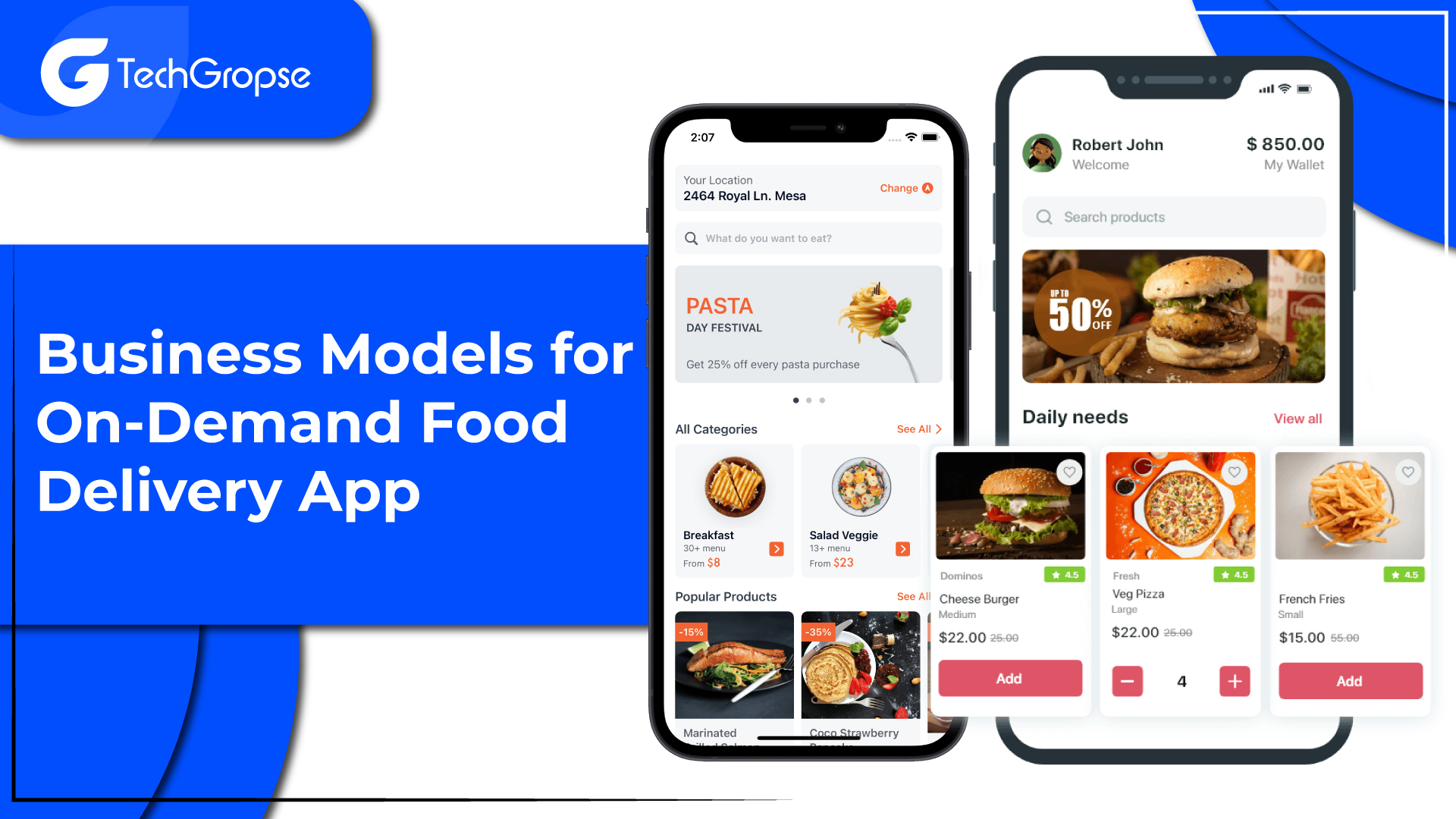
If you are planning to develop an on-demand food delivery mobile application, there are few business models to consider. In general terms, there are 3 main business models. So, let’s dive into those categories in order to find out their advantages.
- Platform to Consumer Model
There are many famous restaurants that choose delivery service apps like DoorDash, UberEats to deliver the food. Henceforth, this model brings together all of the offerings of small restaurants and allows customers to order from them via the app platform. In this instance, the restaurant partners are in charge of their own fleet of messengers.
In the short term, this model seems to be profitable to generate revenue from both customers and restaurants by charging a fixed amount as a fee for each other. The model’s value proposition for restaurants allows them to bring and automate orders through an optimized mobile app/web platform, replacing the traditional food ordering paradigm through phone calls.
- Delivery Service Aggregators
The delivery service aggregator model is technically a part of the platform-to-consumer model. However, it’s completely worth being separated. The platform works like a bridge between customers and local restaurants in the aggregator model. In case customers face any issues while delivering their orders, they can provide customer support on behalf of these restaurants. However, the platform charges a fixed amount of fee on every successful transaction.
- Restaurant-to-Consumer Model
In this model, the restaurant serves food to their customers from their own locations. Domino’s, Burger King and McDonald’s are well-known names that are following this model. Moreover, these companies adopted food delivery from their websites, applications or joined delivery platforms to modernize the approach. Apart from this, they are able to join their hands with food delivery partners, so they don’t need to serve by themselves.
To grow your business, you can also use this model. You can also seek the help of a team of professionals, who are committed to providing next-generation food delivery app development services.
Features an On-Demand Food Delivery Mobile App Must Have
The function of the application makes it unique and engaging. Therefore, it is necessary to include the required features in the application. Here, we list out the required features an on-demand food delivery mobile app must have.
Customer Panel
- Registration
This feature is essential as it enables users to retain customized settings within profiles. Therefore, when deciding to develop an on-demand food delivery mobile app, ensure to include this feature. Apart from phone numbers, you can give an option to users to register to the app via social media like FB and Twitter. Therefore, you have to add this feature to the application.
For this task, you can also consult with a team of professionals who have years of expertise in building on-demand food delivery mobile apps.
- Profile Management
Once deciding to develop an on-demand food delivery mobile app, it is necessary to make sure that the profile settings equip users with all necessary customization tools supporting an easy and intuitive experience. As a result, you have to consider this feature to build a functional and easy-to-use application.
- Request Search
Offering a convenient search system is essential for on-demand food delivery app, as it directly influences user retention. There are only a few customers who spend time finding a suitable restaurant, they just turn to the platform again to make more. In order to make the search system productive, you have to implement advanced filter features to allow customers to range all available services as per their preferences.
Therefore, it is required to include this feature in your application. For this, you can also seek the help of an on-demand app development company that is committed to providing ultimate solutions as per the desires of the clients.
- Order Placement & Checkout
Providing interactive order placement plays an essential part in on-demand meal delivery, as arranging services from the very beginning every time you want to make changes appears irritating. This allows the inclusion or deletion of foods from the cart before payment, sparing the user’s time and patience. To align with this, you have to include options allowing you to reorder the desired dishes or pre-order food, setting the time of delivery instead of traditional.
Restaurant Panel
- Admin Dashboard
Admin panel ensures access to varied management tools controlling orders, public data and other essential content. Therefore, this is required to include this feature in your application. It will help you to develop an on-demand food delivery mobile app in a more convenient way.
- Registration
This is another essential feature your application must have to create representative accounts, which will be displayed on search. The restaurants generally undergo authorization with login and password. So be sure to include this amazing feature in your application.
- Content Management
This is another feature you have to consider to develop an on-demand food delivery mobile app. This feature allows restaurants to edit public information, including names, changing products in dishes, rates or media content such as videos and images. Henceforth, you have to ensure this feature is included in your app.
- Order management
This feature allows restaurants to provide detailed information about current orders and send notifications to customers/couriers about the order status. Henceforth, this is a necessary feature you have to include in your application.
Courier Panel
- Registration
This is another feature you have to include in your application. This feature may be implemented, either with a username and password confirmed by email/phone number or through accounts on social media. In order to make app development easier, you can search for a mobile app development company.
- Profile Management
This is just one more crucial component that your application must have. Courier’s profile generally contains general information such as working hours, name and image. The app feature serves to adjust account settings, add delivery peculiarities, essential details, etc.
- Order Status & Management
Order management includes abilities to see delivery details and choose or reject them. Besides, couriers can update statuses. As a result, your application must have this feature. It helps you in developing a functional application, including rich features.
- Booking History
Account history comes in use to check all accepted/completed deliveries and leave notes, concerning difficulties that emerged. By tracking account history drivers may avoid issues in future and improve their own skills. Therefore, it is necessary to make sure that the app is equipped with this feature.
Complete Guide to Build On-Demand Food Delivery App
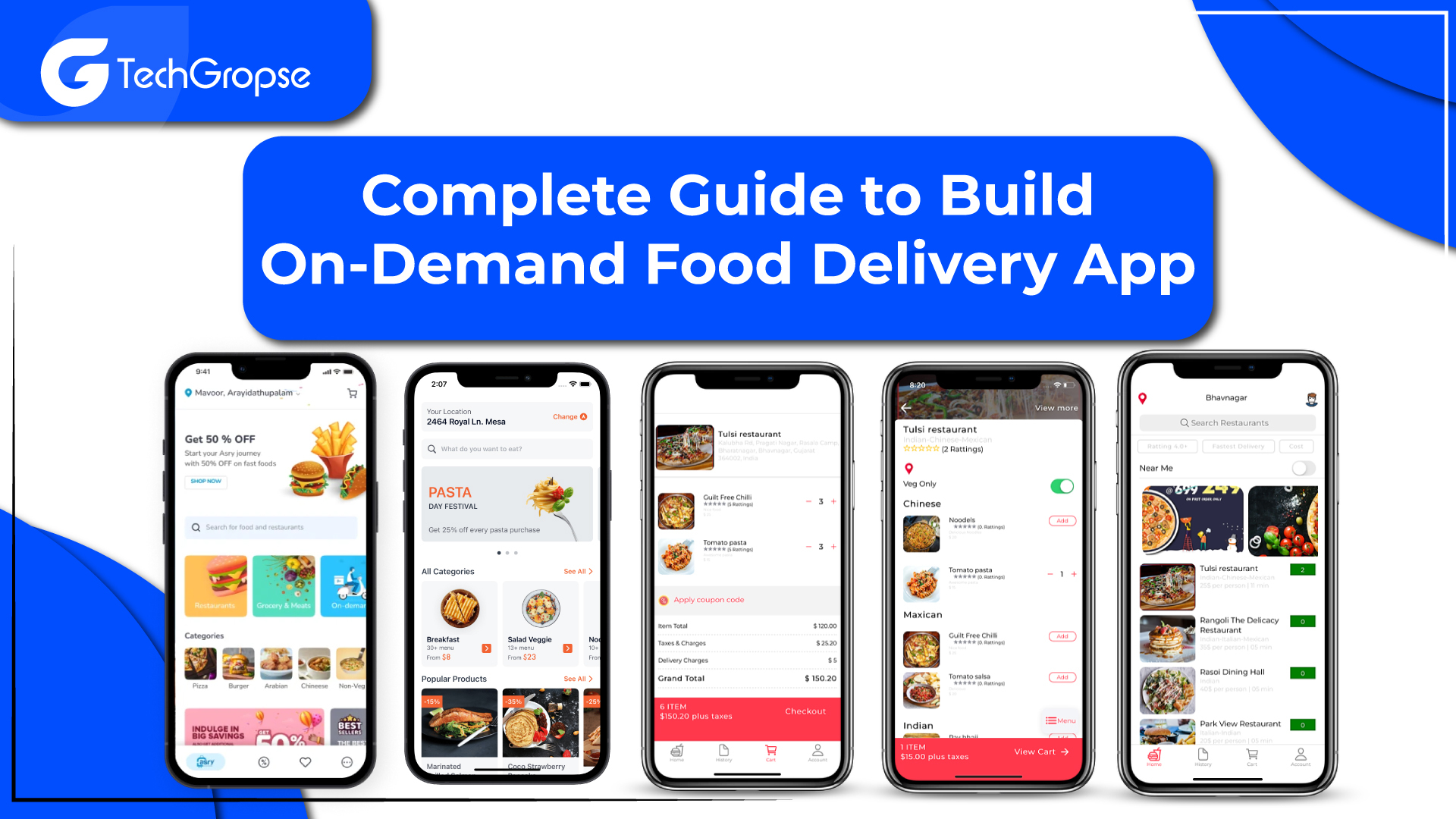
In order to build an on-demand food delivery app, it is necessary to follow the complete procedure. Here is the complete guide you can follow to develop an on-demand food delivery mobile app.
1. Validate Your Food Delivery App Idea
Conduct market research before starting any development. However, the food delivery industry has substantial profit potential; there are only a handful of significant players along with Uber Eats, DoorDash, and Grubhub. There is a higher possibility that, by conducting research, it is easy to determine what your customers are looking for.
It enables you to grow your business, fulfil client expectations, and avoid third-party expenses connected to other delivery apps. Therefore, you have to validate your food delivery app idea in order to develop an on-demand food delivery mobile app.
2. Choose the Development Method
Now it is time to choose the development method to develop on-demand food delivery mobile applications. However, there are many ways to build an app. However, building your own app is not an easy task, which is why you have to search for an on-demand food delivery mobile app development company that is committed to providing ultimate solutions as per the demand of the clients.
So, while deciding to develop on-demand food delivery mobile app, don’t forget to choose the development method.
3. Identify The Business Model
After that, it is necessary to choose a business model. You know that food delivery app function using many business models, each with its monetization techniques:
Deliver Services: It is necessary to coordinate deliveries between entries and clients, charging establishments in order to use the platform and keeping a portion of each other.
Third-Party Facilitator: No doubt that your application links restaurants and customers with third parties managing all deliveries. You don’t directly participate in food delivery; instead, you need to provide an app as a service.
Direct Food Delivery: The restaurants or stores have mobile apps that handle order fulfilment internally and charge clients directly.
By choosing the first two methods, you are able to make money by charging restaurants for deliveries, taking a cut of sales, or charging for premium subscriptions. The third model either directly charges clients or may always include delivery charges.
4. Choose Features
Once deciding to develop on-demand food delivery app, choose features you want to include in your application. You can also customize the features to fit your particular company model. Above we also include a list of features so you can choose your features wisely as per your requirements. You have to ensure that the functionality you choose supports the main objective of the application.
It is necessary to consider placing a menu system in order to display food products above irrelevant features such as social network integration or discussion boards if you are deciding to tailor on-demand food delivery app.
5. Development and Design
Design and development is another procedure to develop on-demand food delivery mobile app. However, the design and development phases will change depending on your chosen approach. In order to make the procedure easier and more convenient, you can seek the help of a mobile app development company that is committed to providing you with the ultimate solutions as per your requirements.
6. Marketing and Launch
Launching the mobile application on the Apple App Store and Google Play Store is the last stage to develop on-demand food delivery mobile app. After launching the application, you have to promote your application on your website in-store fliers, through email marketing and through social media campaigns.
By following these steps, you are able to develop on-demand food delivery application. However, the development procedure is not an easy task on your own. In such a situation, you can search for a leading mobile app development company that has a proven track record.
The Final Note
In today’s time, the demand for food delivery apps is becoming more and more. So, it is good to build a functional application for your business. However, you need to make sure that you are following the complete procedure without skipping a single step. This will help you in turning your idea into reality.
In order to develop on-demand food delivery mobile app, you can also look at the above-listed steps. It will help you in building a functional application. However, food delivery app development cost may differ based on other factors, so you have to consult with professionals in advance.
FAQs
1. How do I go about creating an app for on-demand food delivery?
Start by outlining the essential functions of your app, like order placement, payment processing, delivery tracking, restaurant listings, and user registration.
2. Which technologies are frequently employed in the creation of apps?
React Native or Flutter for cross-platform development, Node.js or Python for the backend, and databases like PostgreSQL or MongoDB are examples of frequently used technologies.
3. How can I make sure that payments are made securely?
Implement tokenization for safe processing of payment data, integrate reliable payment gateways like PayPal or Stripe, and follow PCI-DSS compliance guidelines.






